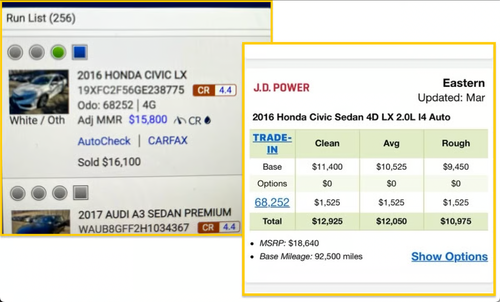Car Dealerships Increase Pressure Against EV Sales Quotas

Table of Contents
Financial Strain and Lack of Infrastructure
Meeting EV sales quotas presents significant financial challenges for dealerships. The transition to selling and servicing electric vehicles requires substantial upfront investments and ongoing operational changes.
High Initial Investment Costs
Dealerships face hefty upfront costs to adapt to the EV market. These costs can be prohibitive for some, potentially hindering their ability to meet EV sales quotas.
- New Equipment: Investing in specialized tools and equipment for EV repair and maintenance is crucial but expensive. This includes high-voltage safety training equipment, diagnostic scanners capable of handling EV systems, and specialized lifting equipment.
- Employee Training Programs: Sales staff require specialized training to understand EV technology, charging infrastructure, and battery maintenance, necessitating significant investment in training programs and potentially impacting short-term profitability.
- Inventory Adjustments: Dealerships need to invest in showcasing and storing EVs, which may require modifications to their existing facilities and potentially increased inventory holding costs due to higher initial vehicle prices.
- Securing Financing: Obtaining loans or financing for these substantial upgrades can be difficult for some dealerships, particularly smaller, independent businesses. Banks and lenders may be hesitant to offer loans for niche investments without clear evidence of return on investment.
Inadequate Charging Infrastructure
The lack of a robust public charging infrastructure is a major deterrent to EV adoption and a considerable challenge for dealerships. Consumer hesitancy to purchase EVs due to range anxiety directly impacts sales targets.
- Limited Charging Station Availability: Many areas still lack sufficient public charging stations, leaving consumers with concerns about finding charging points during long journeys.
- Consumer Concerns Regarding Range and Charging Times: Range anxiety remains a significant barrier to EV adoption, with consumers worried about running out of charge before reaching a charging station. Slow charging times further exacerbate these concerns.
- Government Incentives for Infrastructure Development: While government incentives exist to encourage the construction of charging stations, the pace of deployment often lags behind the increasing demand. Further investment is needed to create a comprehensive charging network to alleviate consumer anxieties and support EV sales targets.
Resistance to Change and Lack of Support
Beyond financial constraints, dealerships are encountering resistance to change stemming from a lack of support and perceived lower profitability.
Sales Training and Expertise Gap
Effectively selling EVs requires a different sales approach than traditional gasoline vehicles. Dealerships often struggle to provide their sales teams with adequate training and support.
- Specialized EV Sales Training Programs: Comprehensive training programs covering battery technology, charging infrastructure, and government incentives are crucial but often lacking.
- Manufacturer Support for Training: Manufacturers play a crucial role in providing resources and training materials for dealerships, but support levels vary significantly across different brands. A lack of consistent and comprehensive support hampers the transition for many.
Concerns Regarding Profit Margins
Dealerships express concerns that profit margins on EVs are currently lower than those on traditional gasoline vehicles, potentially impacting their overall profitability.
- Profit Margin Comparison: While the long-term viability of EVs is promising, the initial higher purchase prices and lower service revenue compared to gasoline vehicles may negatively affect short-term profitability.
- Government Subsidies and Incentives for Dealerships: Government subsidies and incentives for EV sales can mitigate some of these concerns, but these programs require careful design and implementation to ensure their effectiveness.
Impact on EV Market Growth and Consumer Adoption
The resistance from dealerships significantly impacts the rate of EV adoption and the overall success of the electric vehicle transition.
Slowed Adoption Rates
Dealerships play a crucial role in EV adoption. Their resistance to change directly translates to slower adoption rates compared to what could be achieved.
- Current EV Adoption Rates and Market Projections: While EV sales are growing, they are not keeping pace with the targets necessary to achieve climate goals and reduce carbon emissions.
- Impact of Dealership Resistance on Consumer Perception: Negative experiences or a lack of information at dealerships can discourage consumers from purchasing electric vehicles, perpetuating the cycle of slower adoption.
The Role of Government Regulations
Government policies and regulations have a crucial role in influencing dealership behavior and driving EV adoption. A more collaborative approach is needed to foster a smoother transition.
- Successful Government Initiatives Promoting EV Sales: Incentive programs, tax credits, and regulations mandating minimum EV sales quotas can encourage dealerships to invest in the transition. However, these policies must be carefully designed to address the concerns of dealerships.
- Policy Adjustments to Address Dealership Concerns: A collaborative approach involving government, manufacturers, and dealerships is crucial to develop policies that support the transition while recognizing the challenges faced by dealerships.
Conclusion
The pressures surrounding EV sales quotas are creating significant challenges for car dealerships. The high upfront investment costs, inadequate charging infrastructure, resistance to change, and concerns about profit margins are all contributing factors. Addressing these concerns requires a multi-pronged approach involving greater financial support, improved infrastructure development, enhanced training programs, and a collaborative dialogue between government, manufacturers, and dealerships. Understanding the pressures around EV sales quotas is crucial for fostering a successful transition to electric mobility. Let's explore potential solutions together to ensure a future where EVs thrive.

Featured Posts
-
 Tarantinov Tabu Film S Johnom Travoltom Koji Izbjegava
Apr 24, 2025
Tarantinov Tabu Film S Johnom Travoltom Koji Izbjegava
Apr 24, 2025 -
 Bitcoins Rise Analyzing The Impact Of Trade And Monetary Policy
Apr 24, 2025
Bitcoins Rise Analyzing The Impact Of Trade And Monetary Policy
Apr 24, 2025 -
 417 5 Million Stalking Horse Bid Village Roadshows Sale To Alcon Complete
Apr 24, 2025
417 5 Million Stalking Horse Bid Village Roadshows Sale To Alcon Complete
Apr 24, 2025 -
 Nba All Star Game Draymond Green Moses Moody And Buddy Hield Participate
Apr 24, 2025
Nba All Star Game Draymond Green Moses Moody And Buddy Hield Participate
Apr 24, 2025 -
 John Travolta Pogledajte Kako Je Njegova Kci Odrasla
Apr 24, 2025
John Travolta Pogledajte Kako Je Njegova Kci Odrasla
Apr 24, 2025
